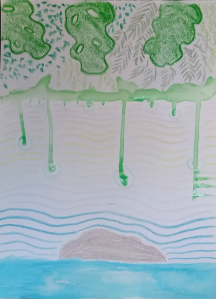I’ve been blessed to have close relationships where I’ve felt deeply cared for, and where (I hope) they have felt deeply cared for as well. Those connections are a mighty yet small portion of my relationships, and I often crave deeper ties with others.
One thing that I’ve been searching for is space to be me. It’s something I couldn’t quite name–though I felt it strongly–until I read “What it means to “hold space” for people, plus eight tips on how to do it well”.
In the piece, Heather Plett writes about when her mom passed, but the process of holding space applies to situation big and small. It’s about allowing people to trust their own intuition, hold on to their power, fail, and make decisions different than we would. It’s also about keeping our own egos out of it, providing appropriate levels of information, and creating a container for complex emotions.

The people I love most dearly are all people who have done this for me over and over again. The supervisors who I’ve most admired have done this for me at work over and over again. And I try to do this for my loved ones over and over again.
With Plett’s writing as a guide, I can now clearly articulate to others what it is I want and hopefully also provide it to them without them having to ask.
Read the full advice at https://heatherplett.com/2015/03/hold-space/.
